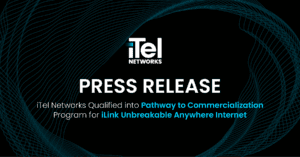MPLS stands for Multiprotocol Label Switching. Contrary to what some might think, this is not a type of internet connection (like fibre) – MPLS is more of a “technique” for using your internet more efficiently.
 SearchEnterpriseWAN defines MPLS as “a protocol for speeding up and shaping network traffic flows”, which means that MPLS sorts and prioritizes your data packets (those little tidbits of information travelling through the world wide web) based on their class of service – e.g. what’s important to your business? IP phone traffic or youtube? Quickbooks or Facebook?
SearchEnterpriseWAN defines MPLS as “a protocol for speeding up and shaping network traffic flows”, which means that MPLS sorts and prioritizes your data packets (those little tidbits of information travelling through the world wide web) based on their class of service – e.g. what’s important to your business? IP phone traffic or youtube? Quickbooks or Facebook?
Your available usable bandwidth increases and your critical applications like voice and video are guaranteed 100% uptime.
How does MPLS work?
So we know that MPLS is a packet-labelling technique that prioritizes types of data, but how does it actually work?
Think of MPLS like mailing a package:
For most connections, networks need to look inside every data packet at each router to know where it’s going. It’s like having to look inside a shipped package at every post office along the way to find out its final destination.
It would be a lot more efficient to have packages arrived at the post office with a destination labelled on the outside. That way, the workers could sort them without a lengthy inspection. With MPLS, an ingress router will label packets on entry to the network, so that routers know exactly where the data is going without having to open it again and again.
Express Shipping:
To continue the metaphor, MPLS not only adds efficiency to your “shipping,” but also allows some packets to take priority over others. Mission-critical tools get the express route while less relevant applications wait for their turn.
The Bottom Line
Adding new protocols to your business internet can be overwhelming. At iTel, we work with businesses in every industry to design custom, streamlined networks. Contact us today and talk to an expert about finding the right solution for you!




